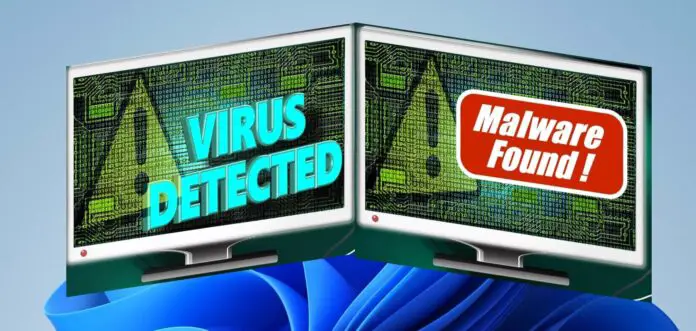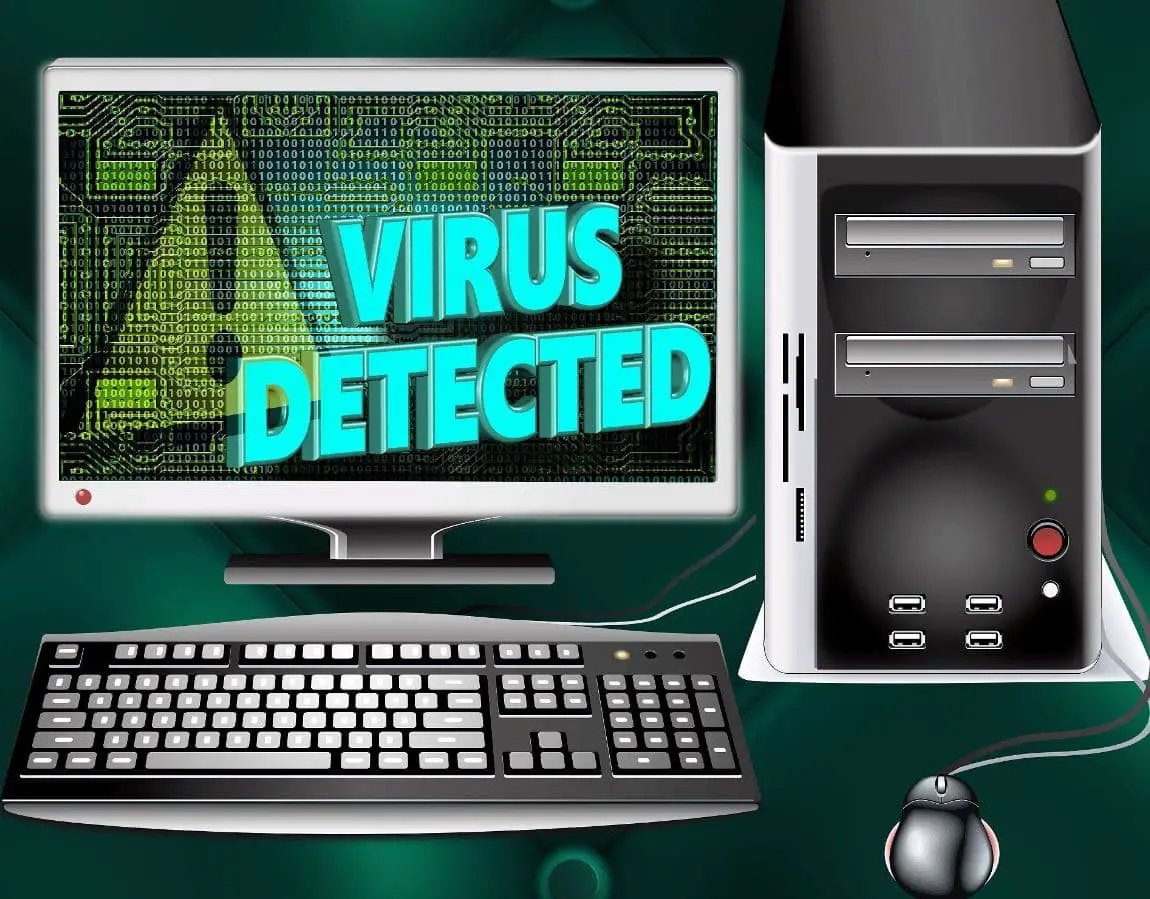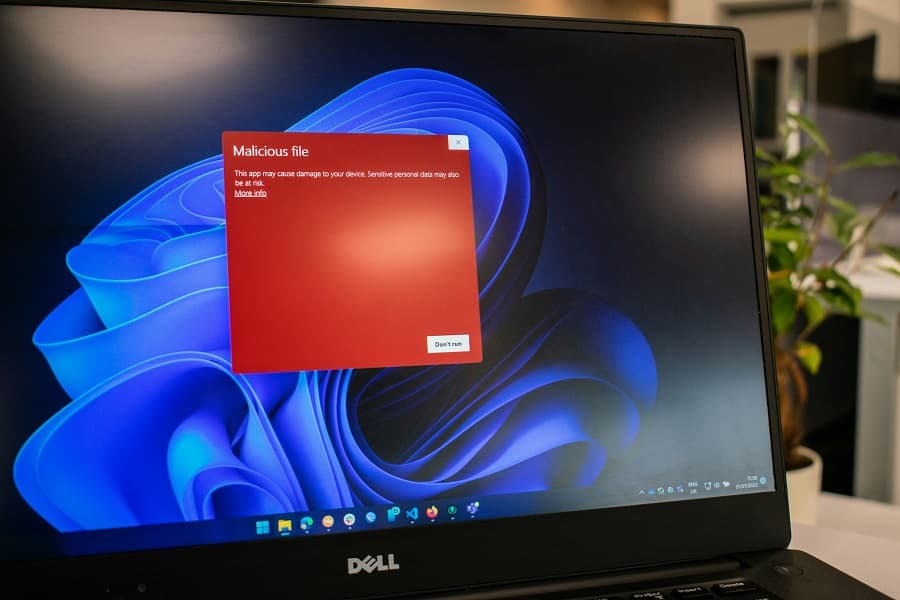If you use a computer or smartphone connected to the internet you probably heard the terms “malware” and “virus”. But do you know what they mean and how they differ? Well, both are malicious software designed to disrupt, damage, or gain unauthorized access to computer systems, but they differ in their characteristics, behaviors, and modes of operation. This article explores the differences between malware and viruses, how they can harm your PC, and the solution to protect your PC against them.
The difference between malware and a virus is that while all viruses are malware, not all types of malware are viruses.
What is malware?
Malware, short for malicious software, refers to any program or code that is designed to harm, disrupt, or compromise the functionality, security, or privacy of a device, network, or system. Malware can be programmed for different purposes, such as stealing personal or financial information, displaying unwanted ads, encrypting or deleting files, spying on user activity, or taking control of the device.
There are many types of malware, such as worms, trojans, ransomware, spyware, adware, and more. Each type has its own characteristics and methods of infection and operation.
- Viruses: Self-replicating programs that attach themselves to legitimate files or programs and spread throughout a computer system. A virus can corrupt or delete data, consume resources, display unwanted messages, and create backdoors for hackers to access the infected devices.
- Trojans: These are programs that pretend to be legitimate or useful applications but contain malicious code that can execute harmful actions. They can steal data, install other malware, delete files, or allow remote access to hackers.
- Ransomware: Malicious software that encrypts files or locks users out of their systems, and demands payment for decryption or restoration.
- Spyware: Programs designed to monitor and collect the user’s personal or sensitive information, such as browsing history, keystrokes, passwords, credit card numbers, etc. They can send this information to third parties for malicious purposes, such as identity theft or fraud.
- Adware: Software that displays unwanted advertisements, pop-ups, or redirects users to malicious websites. Also, install other malware, or collect the user’s browsing habits for targeted advertising.
- Rootkit: This type of malware hides itself deep in your system and modifies its core functions. A rootkit can evade detection by antivirus software, grant hackers full control over your system, or alter the behavior of other programs.
Some malware can be easily detected and removed by antivirus software, while others can hide or disguise themselves to evade detection and removal.
Virus: A Specific Type of Malware
A virus is a specific type of malware that infects a device by attaching itself to another program or file. A virus can only execute and spread when the user runs or opens the infected program or file. A virus can replicate itself and infect other programs or files on the same device or on other devices connected to the same network. A virus can cause various damages, such as corrupting or deleting files, slowing down the device performance, displaying annoying messages, or allowing remote access to hackers.
There are many types of viruses, such as boot sector viruses, file infectors, macro viruses, polymorphic viruses, stealth viruses, and more. Each type has its own characteristics and methods of infection and operation.
- Boot sector viruses: These are viruses that infect the boot sector of a disk drive. The boot sector is the part of the disk that contains the instructions for loading the operating system. When the user boots up their device from an infected disk drive, the virus loads into memory and infects other disk drives or files.
- File infectors: Designed or programmed to infect executable files (.exe or .com) that run programs. When the user runs an infected file, the virus executes its malicious code and infects other files on the same device or on other devices connected to the same network.
- Macro viruses: Can infect macro-enabled documents (.doc or .xls) that contain embedded commands for automating tasks. When the user opens an infected document, the virus executes its malicious code and infects other documents on the same device or on other devices connected to the same network.
- Polymorphic viruses: These are viruses that change their appearance or code every time they infect a new file. This makes them harder to detect and remove by antivirus software.
- Stealth viruses: These type of viruses hide themselves from antivirus software by intercepting system calls or modifying system files. They can also alter their size or location on disk to avoid detection.
Some viruses can be easily detected and removed by antivirus software, while others can mutate or hide themselves to evade detection and removal.
Key Differences: Malware vs. Virus
While all viruses are considered malware, not all malware are viruses. The main difference between malware and virus is that malware is a general term for any harmful software, while virus is a particular kind of malware that infects and replicates itself.
- While malware encompasses a wide range of malicious software, viruses specifically rely on human interaction or software vulnerabilities to spread.
- Malware can infect a system through various means, including phishing emails, software vulnerabilities, or malicious downloads. In contrast, viruses typically require the execution of infected files to initiate the infection process.
- Malware can have diverse payloads, including data theft, system disruption, or financial extortion. Viruses, on the other hand, primarily aim to replicate and spread to other files or systems.
- Malware infections may exhibit visible symptoms such as pop-up ads, system slowdowns, or unauthorized access, while viruses may remain dormant until triggered by specific conditions or actions.
Some examples of malware and viruses are:
- WannaCry: A ransomware that encrypted files on infected computers and demanded payment for decryption. It spread through a worm that exploited a vulnerability in Windows.
- Stuxnet: A worm that targeted industrial control systems and caused physical damage to Iranian nuclear facilities. It was allegedly developed by the US and Israel.
- ILOVEYOU: A virus that masqueraded as a love letter and infected millions of computers worldwide. It deleted files, copied itself to network drives, and sent itself to contacts in the user’s address book.
How to protect your PC from malware and virus?
The best way to protect yourself from malware and virus is to prevent them from infecting your device in the first place. Here are some tips on how to protect your PC against virus or malware infection.
Use Windows security (Defender) or third-party antivirus software to perform regular scans, and keep it updated. Antivirus software can scan your device for malware and virus and remove them if found. It can also block malicious websites or downloads that may contain malware and virus.
Avoid opening suspicious or unsolicited emails or attachments. Emails or attachments that come from unknown or untrusted sources may contain malware and virus. They may also use phishing techniques to trick you into revealing your personal or financial information or clicking on malicious links.
Always avoid downloading or installing software or applications from unverified or illegitimate sources. Software or applications that come from unofficial or pirated sources may contain malware and virus. They may also have hidden or unwanted features that can harm your device or data.
Avoid clicking on pop-up ads or banners that offer free or tempting products or services. Pop-up ads or banners that appear on your device may contain malware and virus. They may also redirect you to malicious websites or downloads that may contain malware and virus.
Use strong and unique passwords for your online accounts and devices. Passwords that are easy to guess or reuse for multiple accounts or devices may expose you to malware and virus. Hackers may use brute force or dictionary attacks to crack your passwords and access your accounts or devices.
Use a firewall and a VPN (virtual private network) when connecting to public or unsecured networks. A firewall can block unauthorized or malicious traffic from entering or leaving your device. A VPN can encrypt your data and hide your online activity from hackers, ISPs (internet service providers), or third parties.
Also read:
- Antivirus vs VPN, Do You really Need Both of these protection services?
- 7 Virus & Malware Infected Warnings: Protect Your Computer Now
- Why Windows 11 Computer Is Running Slowly? (6 Reasons with solutions)
- How To Remove Shortcut Virus Without Formatting or Any Data Loss
- How to turn off safe mode on Windows 11 or Windows 10



